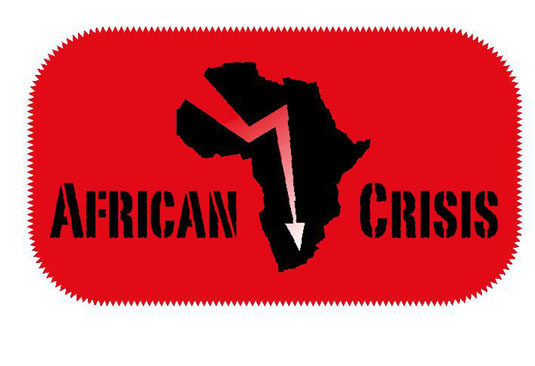WARNING: This is Version 1 of my old archive, so Photos will NOT work and many links will NOT work. But you can find articles by searching on the Titles. There is a lot of information in this archive. Use the SEARCH BAR at the top right. Prior to December 2012; I was a pro-Christian type of Conservative. I was unaware of the mass of Jewish lies in history, especially the lies regarding WW2 and Hitler. So in here you will find pro-Jewish and pro-Israel material. I was definitely WRONG about the Boeremag and Janusz Walus. They were for real.
Original Post Date: 2004-01-21 Posted By: Jan
From the News Archives of: WWW.AfricanCrisis.Org
Date & Time Posted: 1/21/2004 8:56:35 AM
Large parts of southern Africa hit by drought
[Note. This time its for real as opposed to Mugabe’s false claims in recent years – so the results will be interesting to see. Though this last week in Johannesburg we’ve had non-stop rain after weeks of not seeing a drop. Jan]
Large areas of southern Africa, suffering from drought after several years of dry conditions, will likely see farm output slide this year, a regional body said on Tuesday.
Regional Breadbasket South Africa, which usually exports maize to its neighbours, is due to produce only enough of the staple food for its own population in 2004, the Southern African Development Community (SADC) said. This raises the prospects for extra imports from outside the region.
Records for the whole of 2003 showed 27 percent of South Africa received the lowest rainfall in 88 years, it said.
‘This raises the prospects for extra imports’
The United Nation’s World Food Programme has been providing rations to 6,5 million people in southern Africa, mostly in Zimbabwe where economic decline has exacerbated patchy drought.
“In a lot of these countries, last year was also quite a poor season. The position is already precarious because of the cumulative effect,” Kennedy Masamvu, director of SADC’s Regional Remote Sensing Unit in Harare, told Reuters.
The rainy season in most of the region extends from September/October to April/May, but the planting period for maize, the main staple food in much of the area, is already over in southern-most parts. In South Africa many farmers were unable to sow crops due to parched fields.
Worst hit by the drought are areas of South Africa, Lesotho, Swaziland and Mozambique, SADC’s Regional Early Warning System said in a bulletin. Zimbabwe, Malawi, Tanzania, Zambia, Namibia and Botswana are less seriously affected.
“Large areas have received less than 60 percent of normal rainfall so far. Combined with soil moisture levels from a drier than normal winter season, the below-average and erratic rains have left crops, pastures and livestock in poor condition,” it said.
‘The maize crop is in a key period’
In the south, the maize crop is in a key period when it needs enough moisture for pollination. The window for planting is later in northern areas of the region.
Maize production in South Africa is likely to fall to six to seven million tonnes from 9,39 million tonnes in the 2002/03 season, just enough for domestic consumption, the bulletin said.
Southern and central areas of Mozambique are suffering, with the capital Maputo having received less than 30 percent of normal rainfall by December.
“In southern parts of Maputo, most of the first crops planted have failed. The surviving crops are severely water stressed,” the bulletin said.
In Swaziland the western third of the country has been wet, while the rest has had erratic rains and dry conditions. “People in need of food assistance are likely to increase from the 217 000 that was estimated as a result of the previous season’s crop failure,” it said.
A dry start to the season in Lesotho has cut plantings, which combined with problems last season will lead to an estimated 600 000-700 000 people needing food aid in coming months.
In Zambia, which enjoyed a good harvest last year and a surplus of
175,000 tonnes of maize, southern areas were being hit by low rainfall.
In Zimbabwe, where over four million people need food assistance, maize producing areas in the north and east have been hit by dry conditions. “Due to erratic rains, notable production reductions are expected from there,” the bulletin said.
Source: IOL
URL: http://www.iol.co.za/index.php?click_id=68&ar…br>
